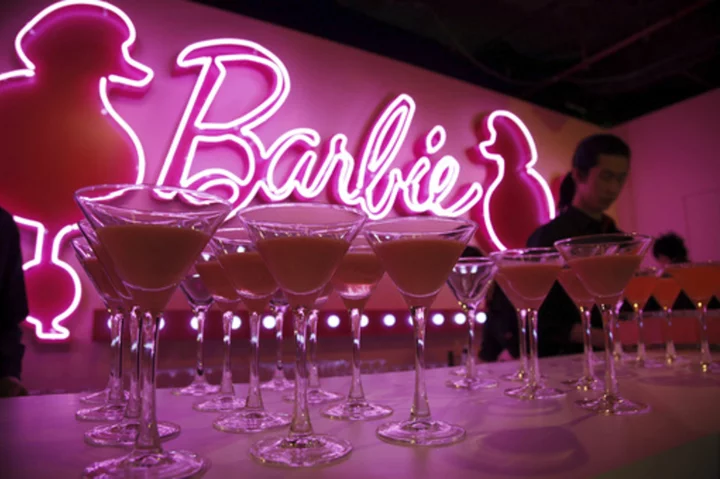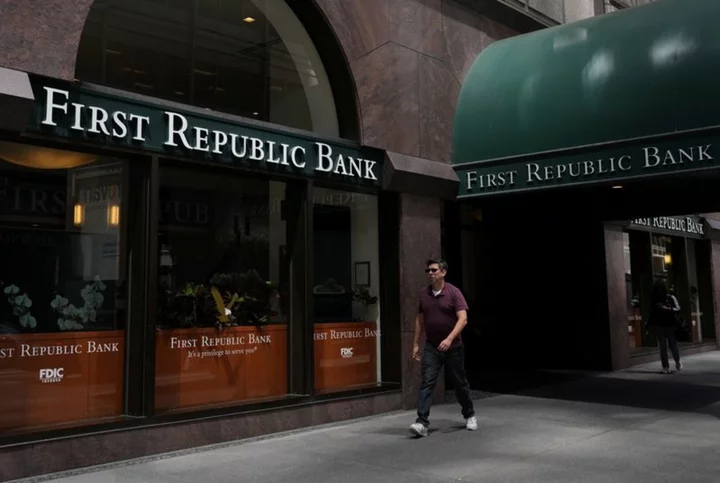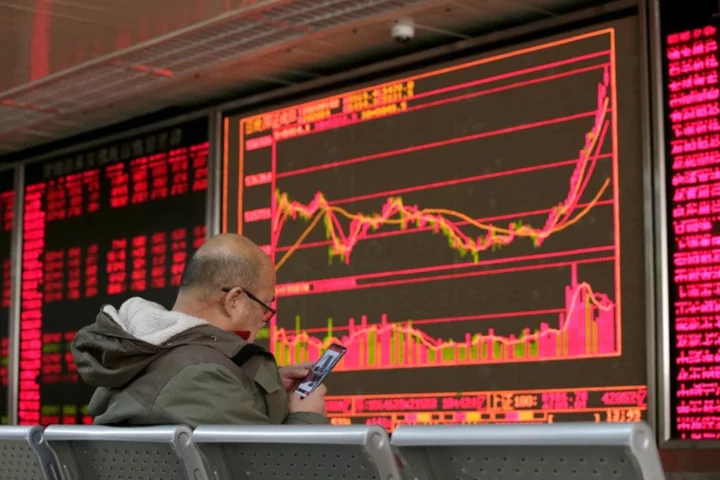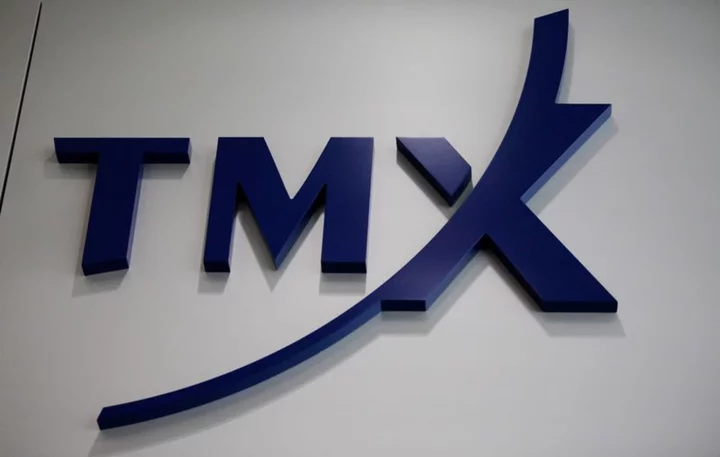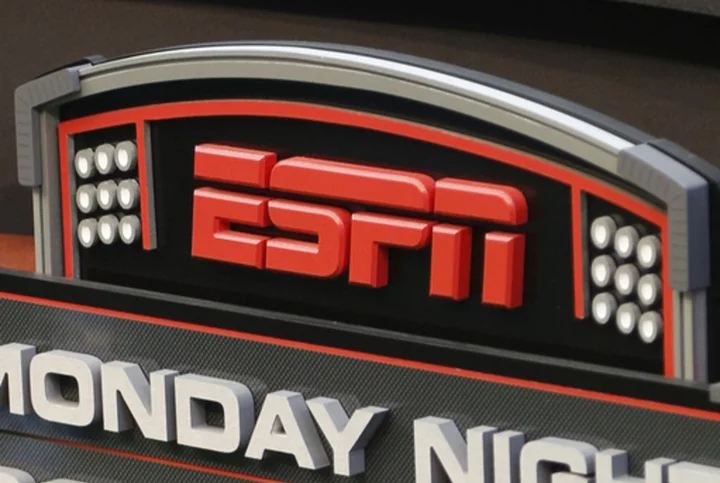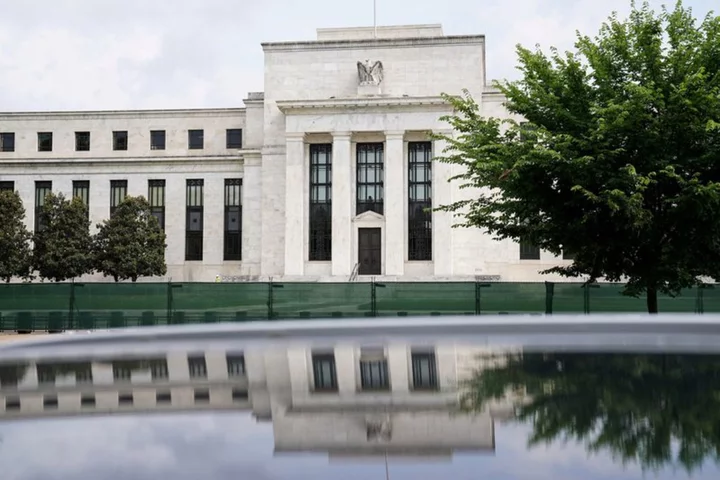“Think pink! think pink! when you shop for summer clothes. Think pink! think pink! if you want that quelque chose.”
That advice, sung as an epiphany in the 1957 musical film “Funny Face,” has definitely been heeded — just take a look around at fashion and media. The fascination around pink — each shade and hue with its own connotation — has shaped those cultural engines for generations, revving into full force as we reach peak “Barbie” season.
The color has been a crucial detail for films and television — from that scene in “Funny Face,” to Elle Woods sporting her iconic head-to-toe vibrant pink courtroom outfit in 2001's “Legally Blonde,” to “The Marvelous Mrs. Maisel,” where the shades of pink in costuming play a symbolic role in the final season. And, now, with the Greta Gerwig-helmed film's release, the vividly hot “Barbie Pink” is inescapable.
Throughout history, designers, artists, and brands have played with the emotions the color evokes, shaping meanings that are ever-evolving. From gender to class, those associations have constantly been challenged, flipped and subverted — while the definition of pink is always in flux, there's one constant: its cultural staying power.
The meanings behind the many shades of pinkPink first became fashionable in the 18th century in the French court, because of a new source of dye that imparted a more vivid, long-lasting color in fabrics, explained Valerie Steele, director of The Museum at FIT and one of the authors of “Pink: The History of a Punk, Pretty, Powerful Color.”
Since then, the cachet of pink has ebbed and flowed; as pink dyes became more accessible to the working class, the color lost its association with wealth and prestige.
When first popularized, it was worn by men and women alike, but in the 1920s, U.S. department stores claimed blue for boys and pink for girls.
“It was really totally arbitrary,” Steele said of the correlation.
Fast forward a few generations to 2016, when Pantone chose “Rose Quartz” as a color of the year: The muted dusty pink is calming but also connotes strength, said Laurie Pressman, vice president of the Pantone Color Institute. She told The Associated Press one of the reasons for the pick was the rise of the “gender blur.” (The color was quickly embraced by fashion and interior designers, earning the moniker of “millennial pink.”)
That symbiotic influence — pink providing texture to and receiving a boost from a cultural force — was evident the next year at the Women's March on Washington, where demonstrators donned loudly pink “pussy hats.”
“Pink has become, in many ways, the most controversial color in fashion, and fashion is always interested in controversy,” Steele said.
For British artist Stuart Semple, pink is the color of rebellion and taking space. Semple created the “pinkest pink” paint in 2016 as a reaction to artist Anish Kapoor purchasing and reserving the artistic rights to the Vantablack pigment, said to be the world’s blackest black.
Semple has made his paint — intended to be the fluorescent apotheosis of the color — accessible to the world at an affordable price.
“I thought it was wrong for me to hold this amazing color that I’d made. So I wanted to make it available to everyone,” Semple told the AP. “Apart from him (Kapoor), for obvious reasons.”
Semple chose pink because it was the “antithesis” of black and it’s a color that's political, vibrant and “the perfect thing to sort of challenge conventions.”
Tanisha Ford, a history professor at The Graduate Center at the City University of New York, noted how male artists — specifically male artists of color like Bad Bunny; Tyler, The Creator, and Jaden Smith — have generated more complex conversations about masculinity by wearing pink clothing.
The color is subversive but also used in a very “tongue-and-cheek kind of way,” Ford said.
“People of color have been denied leisure and denied rest,” Ford said. “So ... if you’re wearing these preppy clothes or you’re wearing your yacht chic clothes, you are staking a claim into leisure.”
When it comes down to it, there's a simple reason why people still wear pink: It looks good.
“At its core, it’s a very flattering color,” Barry Manuel, a New York University fashion professor says.
The season of ‘Barbie Pink’Pink has long been associated with the Barbie brand — she even has her own Pantone color. But even though Barbie was first released in 1959, Mattel didn't star featuring predominantly pink packaging until the 1970s, said Kim Culmone, Mattel's senior vice president and global head of Barbie and fashion dolls design.
When discussing shades of pink associated with the brand, Culmone noted that there’s something inspiring and joyful about “Barbie Pink.”
“Most importantly it’s, for us, it’s really a symbolism of empowerment. Barbie is the original girl empowerment brand,” Culmone said.
It was no surprise that the film’s first full-length trailer dripped pink, showing Barbie Land as a fun, cotton candy wonderland that looks a little artificial. After the trailer was released, news reports claimed the production team bought so many cans of pink paint that it depleted the world’s supply.
Gerwig told the AP that she wasn’t so sure about that — but she did confirm the crew did buy every can of pink paint from one particular company. The director explained it was important to use pink paint to capture older film techniques and to make the audience feel like Barbie Land was tactile.
“It’s toys, and what are toys but things that you touch? And so getting all that pink paint, to paint everything was important,” Gerwig said.
Capitalizing on colorSemple, however, has taken issue with the monopoly and the “press done around running out the paint supply.”
“Whether it’s true or not, it’s still not very nice,” he told the AP.
Semple explains he’s standing up to what he calls “Big Color,” where corporations dominate the usage. He cited “Tiffany Blue,” the trademark color of the jewelry company.
In response to “Barbie,” Semple went back to his previous game plan and created “the Barbiest pink.” Called “Pinkie,” anyone can buy the paint color — as long as they attest to not being employed by Mattel.
“Colors should belong to everybody. And corporations should do what they do best, which is corporate stuff, and perhaps leave colors alone,” Semple said.
When asked for comment on Semple's “Pinkie” paint, a Mattel spokesperson simply responded in an email, “While not a registered trademark, Barbie Pink is recognized as a famous trademark of the brand.”
We're drawn to colors because they instantly convey various emotions, explained David Loranger, a professor of fashion merchandising and marketing at Sacred Heart University.
“I feel like having a direct line to the senses from a marketing standpoint is so important because it’s a nonverbal, it’s a semiotic vehicle,” Loranger said. “The best marketing is very deeply rooted in emotion.”
But from where do those innate emotional connections stem? It could come from something in nature, a belief system or something we've been told.
“Every color has meaning that we almost inherently sense from that color, whether we’ve learned about it by association or just conditioning, which helps us to intuitively understand the message and the meaning that’s delivered,” Pressman said.
When it comes to consumer marketing, the wide variance in pink's meanings means everyone can get in on the action. From high fashion — Valentino collaborated with Pantone and created a collection out of the resulting custom shade, shown on a pink runway last March — to everyday items, pink abounds.
Brands now help shape our perception of color, and it pays to have a signature shade.
“Color can be an effective marketing tool. But more than I’d say it’s a bigger idea about claiming something, finding something new to talk about telling the consumer a story,” Miguel said.
Encased in pink, “Barbie” captures an artificial dreamland that instills nostalgia and joy, satisfying the audience's urge to escape.
“People are happy to find something that captures the imagination and transports them to somewhere simple, happy and fun,” Miguel said, “and pink is that.”
___
Associated Press journalist Krysta Fauria contributed to this story.

